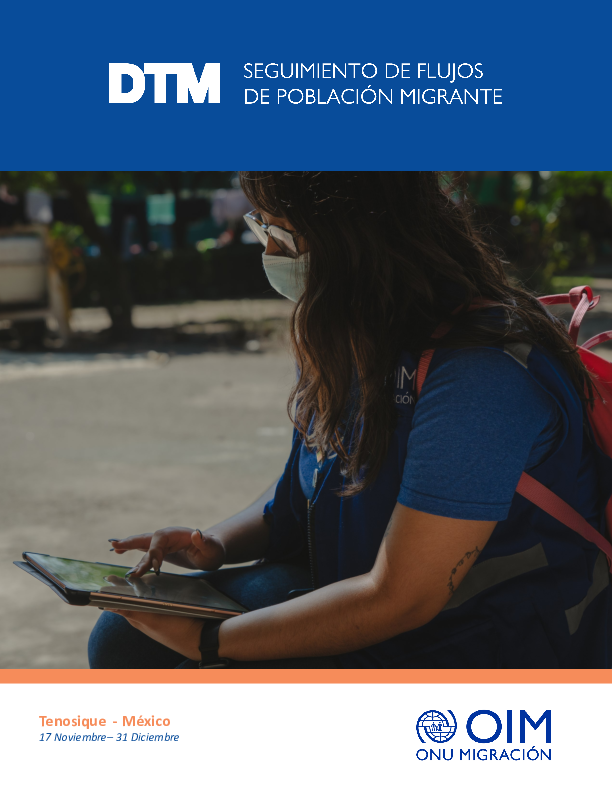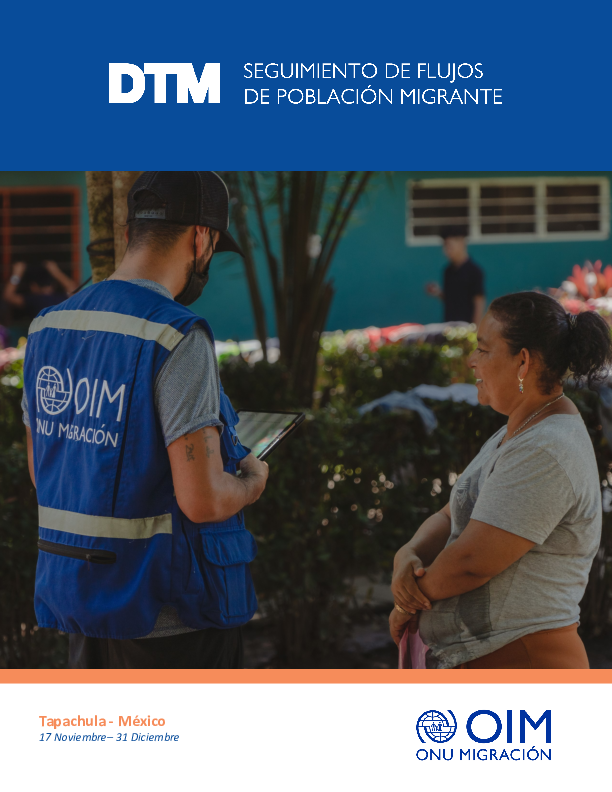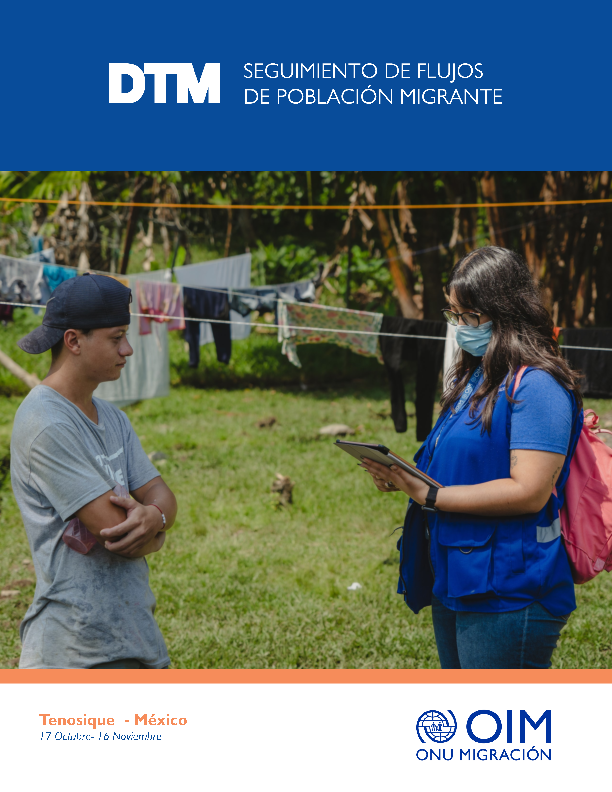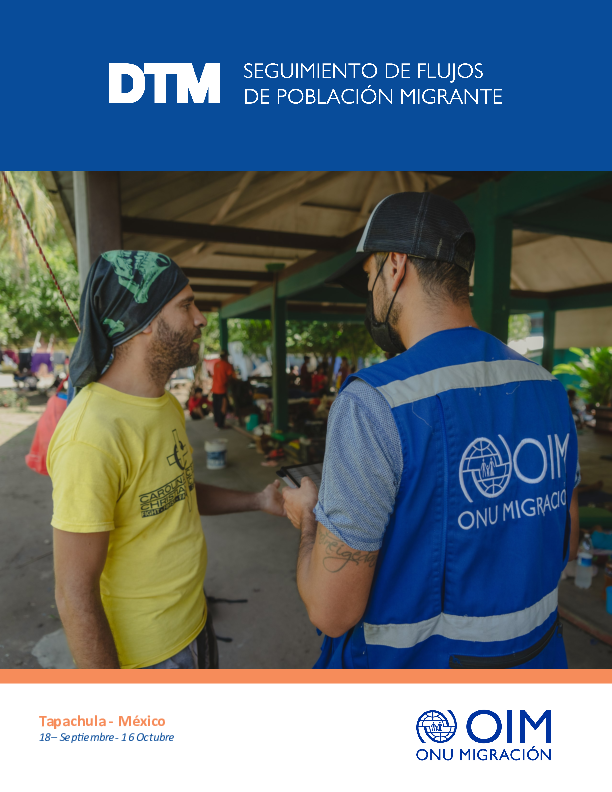-
Countries
-
Data and Analysis
-
Special Focus
-
Crisis Responses
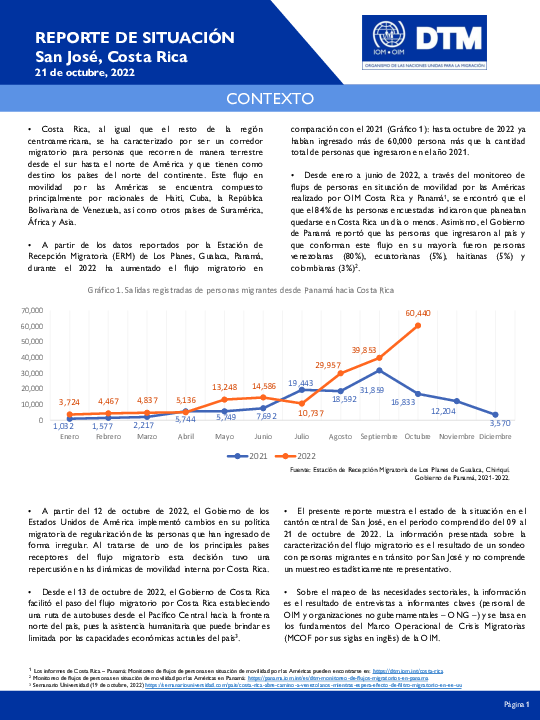
Contact
DTM Costa Rica, DTMCostarica@iom.int
Language
English
Location
Costa Rica
Period Covered
Oct 14 2022
Oct 21 2022
Activity
- Flow Monitoring
Costa Rica, al igual que el resto de la región centroamericana, se ha caracterizado por ser un corredor migratorio para personas que recorren de manera terrestre desde el sur hasta el norte de América y que tienen como destino los países del norte del continente. Este flujo en movilidad por las Américas se encuentra compuesto principalmente por nacionales de Haití, Cuba, la República Bolivariana de Venezuela, así como otros países de Suramérica, África y Asia.
A partir de los datos reportados por la Estación de Recepción Migratoria (ERM) de Los Planes, Gualaca, Panamá, durante el 2022 ha aumentado el flujo migratorio en comparación con el 2021 (Gráfico 1): hasta octubre de 2022 ya habían ingresado más de 60,000 persona más que la cantidad total de personas que ingresaron en el año 2021.
Desde enero a junio de 2022, a través del monitoreo de flujos de personas en situación de movilidad por las Américas realizado por OIM Costa Rica y Panamá1 , se encontró que el que el 84% de las personas encuestadas indicaron que planeaban quedarse en Costa Rica un día o menos. Asimismo, el Gobierno de Panamá reportó que las personas que ingresaron al país y que conforman este flujo en su mayoría fueron personas venezolanas (80%), ecuatorianas (5%), haitianas (5%) y colombianas (3%).

Contact
DTMUkraine@iom.int
Language
English
Location
Ukraine
Period Covered
Dec 12 2022
Dec 25 2022
Activity
- Mobility Tracking
- Baseline Assessment
The IDP Area Baseline assessment provides granular data on the number and geographic location of officially registered internally displaced persons (IDPs). Data collection for the Area Baseline assessment Round 19 took place between 12 and 25 December across 22 oblasts and Kyiv city. Since last round, DTM has expanded its geographical coverage by collecting the IDP figures from local authorities in Donestka oblast. In the areas covered, the number of recorded IDPs was collected for all 111 raions and 940 hromadas (71 per cent of all hromadas in the covered oblasts). In addition, gender disaggregated figures were provided across 52 per cent of hromadas – in those areas, 62 per cent of registered IDPs were females and 398 per cent were males in assessed locations.
This report assesses registered IDP presence at the hromada and oblast-levels, while also mapping the percentage change since the previous round. It further highlights the rate of change at the macro-regional level and charts the registered IDP figures at the raion-level across the previous 8 rounds.

Contact
DTMMozambique@iom.int
Language
English
Location
Mozambique
Period Covered
Jan 11 2023
Jan 17 2023
Activity
- Mobility Tracking
- Event Tracking
During the reporting period (11 to 17 January 2023), a total of 44 movements were recorded - 17 arrivals (1,210 individuals), 15 departures (1,445 individuals), 11 returns (301 individuals) and 1 transit (50 individuals). The largest arrival movements were recorded in Mocimboa da Praia (592 individuals), Muidumbe (361 individuals) and Mueda (117 individuals). The largest departure movements were recorded in Mueda (692 individuals), Nangade (452 individuals) and Montepuez (282 individuals). The largest return movement was observed in Montepuez (206 individuals). Only one transit movement was observed from Pemba to Mocimboa da Praia (50 individuals). Of the total population, 13 per cent of mobile groups were displaced for the first time, 38 per cent for a second time and 49 per cent were displaced at least three times.

Contact
DTM Mozambique, DTMMozambique@iom.int
Language
English
Location
Mozambique
Period Covered
Nov 01 2022
Nov 30 2022
Activity
- Community Perception
Since October 2017, the province of Cabo Delgado in Northern Mozambique has experienced violent attacks by non-state armed groups, resulting in an environment of insecurity significantly affecting conflict-affected host communities, displaced communities, and left behind communities. As a result of ongoing security incidents, an estimated 946,508 individuals live in protracted displacement according to International Organisation of Migration’s (IOM) Displacement Track Matrix (DTM) Baseline Round 16 (June 2022). Vulnerable populations, including women, children, the elderly as well as persons with disabilities, face compounded risks and threats in times of extended humanitarian and emergency crises.
Mozambique’s most recent population census, conducted in 2017, estimated that 2.6 per cent (or 727,620 out of 28.6 million people) live with a disability. However, challenges related to disability data collection, methodology, and training of staff, along with the on-going conflict, suggests that the estimated rate of people living with disabilities in Mozambique is likely under reported.
